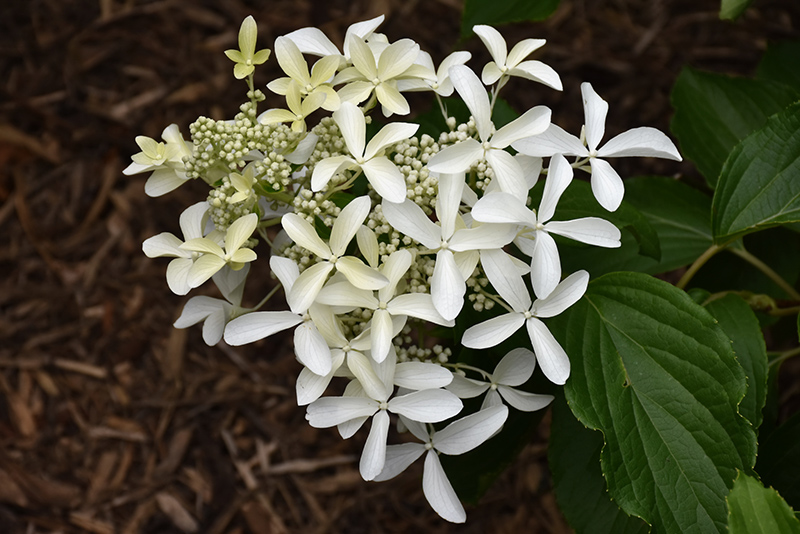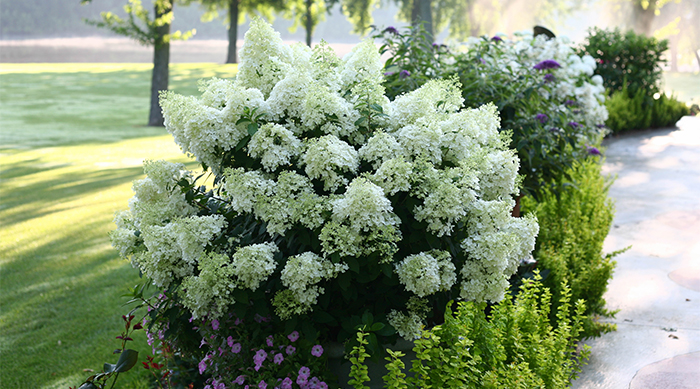Hydrangea Paniculata Great Star: The Showstopper Shrub That Will Bloom Your Garden
Hydrangea paniculata Great Star is a showstopping shrub that will bloom your garden from midsummer to fall. It is a vigorous grower, reaching up to 6 feet tall and wide, with large, star-shaped white flowers that fade to pink in the fall. The flowers are borne on upright panicles, making them perfect for cutting and displaying.
Great Star is a relatively easy plant to care for, and it is hardy in USDA zones 3-8. It prefers full sun or partial shade, and it needs moist, well-drained soil. To encourage flowering, fertilize Great Star in the spring with a balanced fertilizer.
In addition to its beauty, Great Star is also a valuable addition to the garden because it is a magnet for pollinators. Bees, butterflies, and hummingbirds all love to visit the flowers, making Great Star a great choice for a wildlife-friendly garden.
If you are looking for a beautiful, easy-care shrub that will add color and interest to your garden, Hydrangea paniculata Great Star is a great choice.
Main Content
Growing Great Star Hydrangea
Great Star hydrangea is a relatively easy plant to grow, but there are a few things you should keep in mind to ensure that it thrives.
- Sunlight: Great Star hydrangea prefers full sun or partial shade. Too much shade will result in fewer flowers, while too much sun can scorch the leaves.
- Soil: Great Star hydrangea does best in moist, well-drained soil. If your soil is sandy, you may need to add some organic matter to improve drainage.
- Watering: Great Star hydrangea needs regular watering, especially during the hot summer months. Water deeply so that the water reaches the roots.
- Fertilizer: Fertilize Great Star hydrangea in the spring with a balanced fertilizer. A good fertilizer to use is 10-10-10.
- Pruning: Great Star hydrangea does not need to be pruned heavily. However, you should remove any dead, diseased, or damaged branches in the spring. You can also lightly prune the plant after it blooms to encourage new growth.
Pests and Diseases
Great Star hydrangea is generally resistant to pests and diseases. However, it is susceptible to aphids, scale, and powdery mildew. If you see any of these pests or diseases, you can treat them with an appropriate insecticide or fungicide.
Propagation
Great Star hydrangea can be propagated by cuttings or by division. To propagate by cuttings, take 4-6 inch cuttings in the spring or summer. Dip the cuttings in rooting hormone and plant them in a well-drained potting mix. Keep the cuttings moist and in a warm, shady location. The cuttings should root in about 4-6 weeks.
To propagate by division, dig up a mature plant in the spring or fall. Use a sharp knife to divide the plant into two or three sections. Replant the divisions in a well-drained location.
Care for Winter
Great Star hydrangea is hardy in USDA zones 3-8. In colder zones, you may need to protect the plant from winter cold. You can do this by covering the plant with a burlap sack or by wrapping it with horticultural fleece.
Conclusion
Hydrangea paniculata Great Star is a beautiful, easy-care shrub that is perfect for adding color and interest to your garden. With proper care, Great Star hydrangea will thrive for many years to come.
Hydrangea paniculata Great Star is a beautiful and versatile shrub that is perfect for adding a touch of elegance to any garden. It is native to China and Japan, and is known for its large, star-shaped flowers that bloom in shades of white, pink, and blue. Great Star hydrangeas are easy to care for, and can thrive in a variety of conditions. They are best planted in full sun or partial shade, and need well-drained soil.
If you are interested in learning more about Hydrangea paniculata Great Star, I recommend visiting . This website has a wealth of information about this beautiful shrub, including planting instructions, care tips, and troubleshooting advice. You can also find photos of Great Star hydrangeas in bloom, as well as helpful videos.
FAQ of hydrangea paniculata great star
Q: What are the best conditions for growing Hydrangea paniculata Great Star?
A: Hydrangea paniculata Great Star prefers a sunny to partially shaded location in the garden, with well-drained soil. The soil should be rich in humus and nutrients, with a pH between 5.5 and 6 (slightly acidic). The plant should be watered regularly, especially during the flowering season.
Q: How tall does Hydrangea paniculata Great Star grow?
A: Hydrangea paniculata Great Star can grow up to 6 feet tall and 4 feet wide. It is a fast-growing plant, and it can reach its full size in 3-5 years.
Q: What are the colors of Hydrangea paniculata Great Star flowers?
A: Hydrangea paniculata Great Star flowers start out white and then gradually turn pink or blue, depending on the acidity of the soil. The flowers are large and showy, and they bloom from late summer to early fall.
Q: How do I care for Hydrangea paniculata Great Star?
A: Hydrangea paniculata Great Star is a relatively easy plant to care for. It requires regular watering, especially during the flowering season. The plant should also be fertilized once a year in spring. In addition, the plant should be pruned in late winter or early spring to remove dead or damaged branches.
Q: What are some common pests and diseases of Hydrangea paniculata Great Star?
A: The most common pests that attack Hydrangea paniculata Great Star are aphids, spider mites, and scale insects. These pests can be controlled with insecticidal soap or neem oil. The most common diseases that affect Hydrangea paniculata Great Star are leaf spot and powdery mildew. These diseases can be prevented by watering the plant at the base and avoiding overhead watering.
Image of hydrangea paniculata great star
5 different images of "hydrangea paniculata great star" from Pinterest:
- Image 1: A close-up of a white hydrangea paniculata great star flower. The petals are large and fluffy, and they are arranged in a star-like shape.

- Image 2: A full shot of a hydrangea paniculata great star bush in bloom. The flowers are white with a hint of pink, and they are arranged in large, conical clusters.

- Image 3: A hydrangea paniculata great star bush in the fall. The flowers have turned a deep pink color, and they are still in full bloom.

- Image 4: A hydrangea paniculata great star bush in a garden setting. The bush is surrounded by other flowers and trees, and it is a focal point of the garden.

- Image 5: A hydrangea paniculata great star flower in a vase. The flower is still in full bloom, and it is a beautiful addition to the vase.

Post a Comment for "Hydrangea Paniculata Great Star: The Showstopper Shrub That Will Bloom Your Garden"